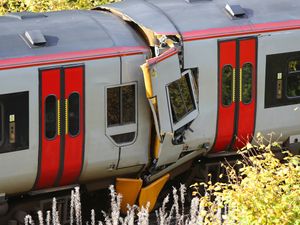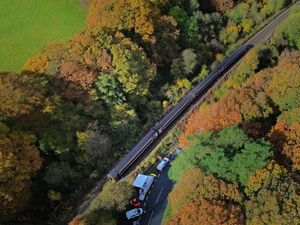Additional check on braking system wasn't carried out before fatal train crash between Shrewsbury and Aberystwyth - report
An interim report has been released as investigators look into a crash between two trains in Mid Wales that killed one passenger and injured 22 others.
The tragic crash occurred on the line between Shrewsbury and Aberystwyth, near the village of Llanbrynmair, at around 7.30pm on October 21 last year.
The collision involved one train travelling from Shrewsbury to Aberystwyth and one heading from Machynlleth to Shrewsbury. Both services were operated by Transport for Wales.
Sixty-six-year-old David Tudor Evans died following the collision while 22 others were injured, four seriously. An inquest into Mr Evans' death is due to take place at a future date but it is suspected that he died from a heart attack.
One of those seriously injured included the driver of one of the trains, who was in the process of leaving the cab when the collision occurred and became trapped.

Now, the Rail Accident Investigation Branch (RAIB) has shared an interim report into the crash, releasing more details about the tragic collision.
The report states that the trains were travelling in opposite directions on a single line, and were meant to pass on the Talerddig Loop - an extra section of line.
The westbound train had been due to stop to allow the eastbound train to pass but was unable to stop within the loop and re-entered the single line.
At the time of the collision, the westbound train was travelling at around 24mph (39km/h) while the eastbound train - having applied the emergency brakes - was travelling in the opposite direction at around 6mph (11km/h).
RAIB investigators have so far found that the automated system that should have sprayed sand to help the wheels grip the tracks had failed.

Wednesday's report revealed that while safety checks were undertaken, an additional assurance check on the braking system was not carried out on the morning of the collision, because the driver was unable to do so due to the train being parked next to a platform.
The report states: "Early on the morning of 21 October, a train driver prepared the train for service. However, the train was positioned adjacent to a platform. This meant that the driver did not have access to equipment on the train’s underframe, including the sander test button.
"Consequently, certain safety systems, including the operation of the automatic sanding system, could not be checked."
In total, four faults were identified on the Aberystwyth-bound train following the accident, including both of the sand delivery hoses being blocked with leaves and debris from trees.
Two electrical faults were also discovered with the sander system, and two plates which made up part of the sander pneumatic system were found to be installed incorrectly.
The report states that no defects were reported by drivers on checks in previous days.
Reading: "During the night of 19 to 20 October 2024, unit 158841 underwent a ‘Fuel Point Examination’ at Machynlleth depot. This is a routine maintenance activity which is carried out approximately every 1,500 miles (approximately 2,400 km) and includes refuelling the train and carrying out checks on safety equipment, including the train’s automatic sanders.
"Before entering service on the morning of 20 October, unit 158841 was prepared by a driver instructor and a trainee driver. This preparation included internal and external inspections of the train, together with further checks of the functionality of safety systems, including the train’s automatic sanders."
The RAIB has also highlighted other factors which may have contributed to the collision - including three days of wet and windy weather from Storm Ashley and the "increased risk of railhead contamination" from the season's leaf fall.
The investigation is still underway and a full report is expected at a later date.
Following the collision, a spokesperson for Transport for Wales said: "Following the rail collision in Powys on Monday, October 21, Transport for Wales and Network Rail have fully cooperated with the British Transport Police, Office of Rail and Road and the Rail Accident Investigation Branch.
"Safety is always our main priority for our customers and colleagues, and we’ll continue to work together with investigators to fully understand what happened and await the full conclusion and recommendations of the investigation."





